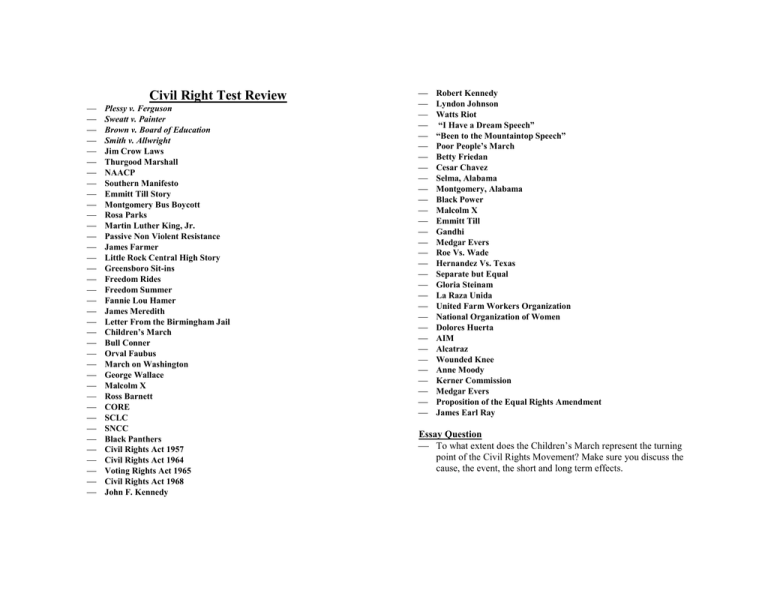Civil Right Test Review
advertisement

Civil Right Test Review Plessy v. Ferguson Sweatt v. Painter Brown v. Board of Education Smith v. Allwright Jim Crow Laws Thurgood Marshall NAACP Southern Manifesto Emmitt Till Story Montgomery Bus Boycott Rosa Parks Martin Luther King, Jr. Passive Non Violent Resistance James Farmer Little Rock Central High Story Greensboro Sit-ins Freedom Rides Freedom Summer Fannie Lou Hamer James Meredith Letter From the Birmingham Jail Children’s March Bull Conner Orval Faubus March on Washington George Wallace Malcolm X Ross Barnett CORE SCLC SNCC Black Panthers Civil Rights Act 1957 Civil Rights Act 1964 Voting Rights Act 1965 Civil Rights Act 1968 John F. Kennedy Robert Kennedy Lyndon Johnson Watts Riot “I Have a Dream Speech” “Been to the Mountaintop Speech” Poor People’s March Betty Friedan Cesar Chavez Selma, Alabama Montgomery, Alabama Black Power Malcolm X Emmitt Till Gandhi Medgar Evers Roe Vs. Wade Hernandez Vs. Texas Separate but Equal Gloria Steinam La Raza Unida United Farm Workers Organization National Organization of Women Dolores Huerta AIM Alcatraz Wounded Knee Anne Moody Kerner Commission Medgar Evers Proposition of the Equal Rights Amendment James Earl Ray Essay Question To what extent does the Children’s March represent the turning point of the Civil Rights Movement? Make sure you discuss the cause, the event, the short and long term effects.











